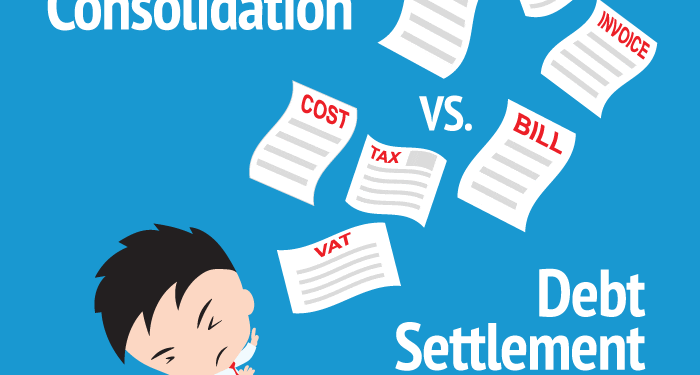When faced with the decision between managing debt and making investments, individuals often find themselves at a crossroads. This article delves into the intricacies of Debt Management vs. Investment: What Comes First?, shedding light on the key considerations that can shape financial decisions.
Exploring the nuances of debt management and investment strategies is crucial in navigating the complex landscape of personal finance.
Understanding Debt Management
Debt management is the process of handling and organizing debts in order to effectively repay them while minimizing financial strain. It involves creating a plan to pay off debts in a structured and timely manner.
Types of Debts
- Credit Card Debt: High-interest debt accumulated through credit card purchases.
- Student Loans: Loans taken out to finance education expenses.
- Mortgages: Loans used to purchase a home, typically with a long repayment period.
- Personal Loans: Borrowed money for various personal expenses.
Importance of a Debt Repayment Plan
A debt repayment plan is crucial as it helps individuals stay organized, prioritize payments, and work towards becoming debt-free. Without a plan, debts can quickly spiral out of control, leading to financial difficulties and stress.
Strategies for Debt Management
- Create a budget: Track income and expenses to allocate funds for debt repayment.
- Prioritize high-interest debts: Focus on paying off debts with the highest interest rates first.
- Negotiate with creditors: Reach out to creditors to explore options for lower interest rates or payment plans.
- Consider debt consolidation: Combining multiple debts into one lower-interest loan can simplify repayment.
Exploring Investment Strategies
Investment is a crucial component of financial planning that involves allocating resources to different assets with the expectation of generating future returns. It plays a vital role in building wealth, achieving financial goals, and securing a stable future.
Types of Investment Options
- Stocks: Investing in shares of publicly traded companies, offering potential for high returns but also higher risk.
- Bonds: Loaning money to governments or corporations in exchange for periodic interest payments and the return of principal.
- Real Estate: Investing in properties for rental income, price appreciation, and portfolio diversification.
- Mutual Funds: Pooled funds managed by professionals, investing in a diversified portfolio of assets.
Short-term vs. Long-term Investment Strategies
Short-term investments are typically held for a year or less and are more liquid, while long-term investments are held for several years, aiming for capital appreciation and wealth accumulation over time.
Tips for Selecting Suitable Investments
- Assess Risk Tolerance: Consider your comfort level with market fluctuations and potential losses.
- Set Financial Goals: Determine your objectives, whether it's saving for retirement, buying a home, or funding education.
- Diversify Portfolio: Spread investments across different asset classes to reduce risk and enhance returns.
- Research and Monitor: Stay informed about market trends, company performance, and economic indicators to make informed decisions.
Prioritizing Between Debt Repayment and Investments
When it comes to managing finances, deciding between prioritizing debt repayment or investments can be a challenging task. Both options have their own set of advantages and disadvantages, and understanding the impact of interest rates is crucial in making an informed decision.
Let's delve into the pros and cons of each approach and explore scenarios where focusing on debt management or investing may be more beneficial.
Prioritizing Debt Repayment Over Investments
When prioritizing debt repayment over investments, individuals can benefit from reducing their overall debt burden and interest costs. By paying off high-interest debts such as credit cards or personal loans, they can save money in the long run and improve their financial standing.
- Pros:
- Reduced interest costs
- Improved credit score
- Financial peace of mind
- Cons:
- Missed investment opportunities
- Potential lower returns compared to investing
Prioritizing Investments Over Debt Repayment
On the other hand, prioritizing investments over debt repayment can potentially lead to higher returns and wealth accumulation over time. Investing early can take advantage of compound interest and grow wealth exponentially.
- Pros:
- Potential for higher returns
- Opportunity for wealth accumulation
- Diversification of assets
- Cons:
- Increased financial risk
- Debt burden may persist
Balancing Debt Management and Investments
When it comes to managing debt and investing, finding the right balance is crucial for financial success. By strategically allocating funds towards debt repayment and investments, individuals can work towards achieving their long-term financial goals while also maintaining financial stability.
Strategies for Balancing Debt Repayment and Investing
One effective strategy for balancing debt repayment and investing is to prioritize high-interest debt first. By focusing on paying off debts with high interest rates, individuals can save money in the long run and free up more funds for investments.
Another approach is to consider the concept of leverage in financial decision-making. Leveraging can help individuals maximize their investment returns by using borrowed funds to invest, but it also comes with risks that need to be carefully managed.
Examples of Effective Fund Allocation
- Allocate a portion of your income towards debt repayment each month while also setting aside a percentage for investments.
- Consider using windfalls, such as tax refunds or bonuses, to make lump sum payments towards debt or invest in opportunities with high returns.
- Automate your payments to ensure timely debt repayment while also setting up automatic contributions to investment accounts.
Adjusting Financial Strategies Based on Changing Circumstances
It's important to regularly review and adjust your financial strategies based on changes in your income, expenses, or financial goals. For example, if you receive a salary increase, you may choose to increase your debt repayments or allocate more funds towards investments.
Similarly, during times of economic uncertainty, you may decide to focus more on debt repayment to reduce financial risk and increase your financial security.
Wrap-Up

As we wrap up our discussion on Debt Management vs. Investment: What Comes First?, it becomes evident that striking a balance between debt repayment and investing is essential for long-term financial stability. By understanding the dynamics of these two components, individuals can chart a path towards financial success with confidence.
Helpful Answers
Should I focus on paying off debt before investing??
It depends on the interest rates of your debts and the potential returns from investments. Generally, high-interest debts should be prioritized for repayment before investing.
How do I determine the right investment for my financial goals?
Consider your risk tolerance, investment timeline, and financial objectives when selecting investments. Diversification is key to mitigating risk and maximizing returns.
Is it possible to manage debt and invest at the same time?
Yes, it is possible to strike a balance between debt repayment and investing. Allocating funds strategically and adjusting financial strategies can help individuals achieve both goals simultaneously.









![5 Best eCommerce Marketing Digital Agencies [2024 Edition]](https://share.radartasik.id/wp-content/uploads/2025/08/Best-E-Commerce-Marketing-Agencies-2048x1024-1-120x86.jpg)
